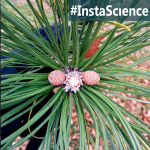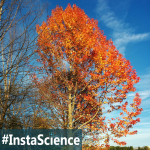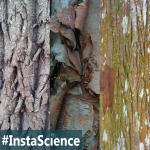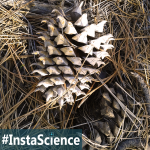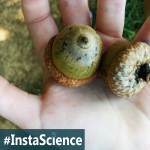Every year, many of us welcome pine trees into our homes in the form of Christmas trees. These ornamented trees have been a part of holiday traditions all over the world and date back from the sixteenth century. Pine trees are one of the oldest trees in the world – they live long to the age of one hundred years old or more! There are around thirty-five different types of these evergreen … [Read more...]
Maple Tree {InstaScience}
Fall is here! Pumpkin-Spiced Lattes abound as the green landscape fades into reds, yellows, and oranges. I love the crisp beauty of fall, but my favorite thing to watch is the change in the local maple trees. Maple leaves display gorgeous colors that are the hallmarks of fall. There are approximately 128 different kinds of maple trees, but the most common are the sugar maple, the red maple, … [Read more...]
Oak Tree {InstaScience}
The oak tree is a symbol of strength and nobility. They grace our land with their gnarled, widespread, solid branches. The oak tree was one of the first trees I learned how to identify, so it holds a special place in my heart. Oak trees can grow to around 100 feet tall. They have a sturdy trunk with branches spreading to create a full tree, providing ample shade. In the winter, the oak sheds it … [Read more...]
Tree Bark {InstaScience}
With all the leaves gone, the bark of a tree is much easier to see and study during the winter months. Plus, this outer covering is an amazing subject to explore with your senses! Bark is beautiful to look at, interesting to touch, and earthy to smell. The tree bark that we see is known as the outer bark. It cover and protects the inner workings of the tree from freezing and from … [Read more...]
Cones {InstaScience}
Cones come in all shapes and sizes. These fruits of conifer trees are excellent subjects to study in the cooler months. But, did you know that there are both male and female cones? The male cone is typically soft, green, and small. In fact, many of us never even notice it, but it is very important. The male cone produces the pollen for the conifer tree and without it the seed would not be able … [Read more...]
How to Dissect Acorns
Our yard is littered with acorns – both complete and crushed. The squirrels like to chuck these oak tree fruits from a high tree branch to break them up and get to the soft inside. One of our children couldn’t understand why the squirrels would do that. So, we decided to grab a couple of complete ones to dissect and today I am sharing the process with you all! How to Dissect an … [Read more...]
 Sign up below to receive weekly tips & tools for homeschool science and we'll send you a FREE copy of
Sign up below to receive weekly tips & tools for homeschool science and we'll send you a FREE copy of 